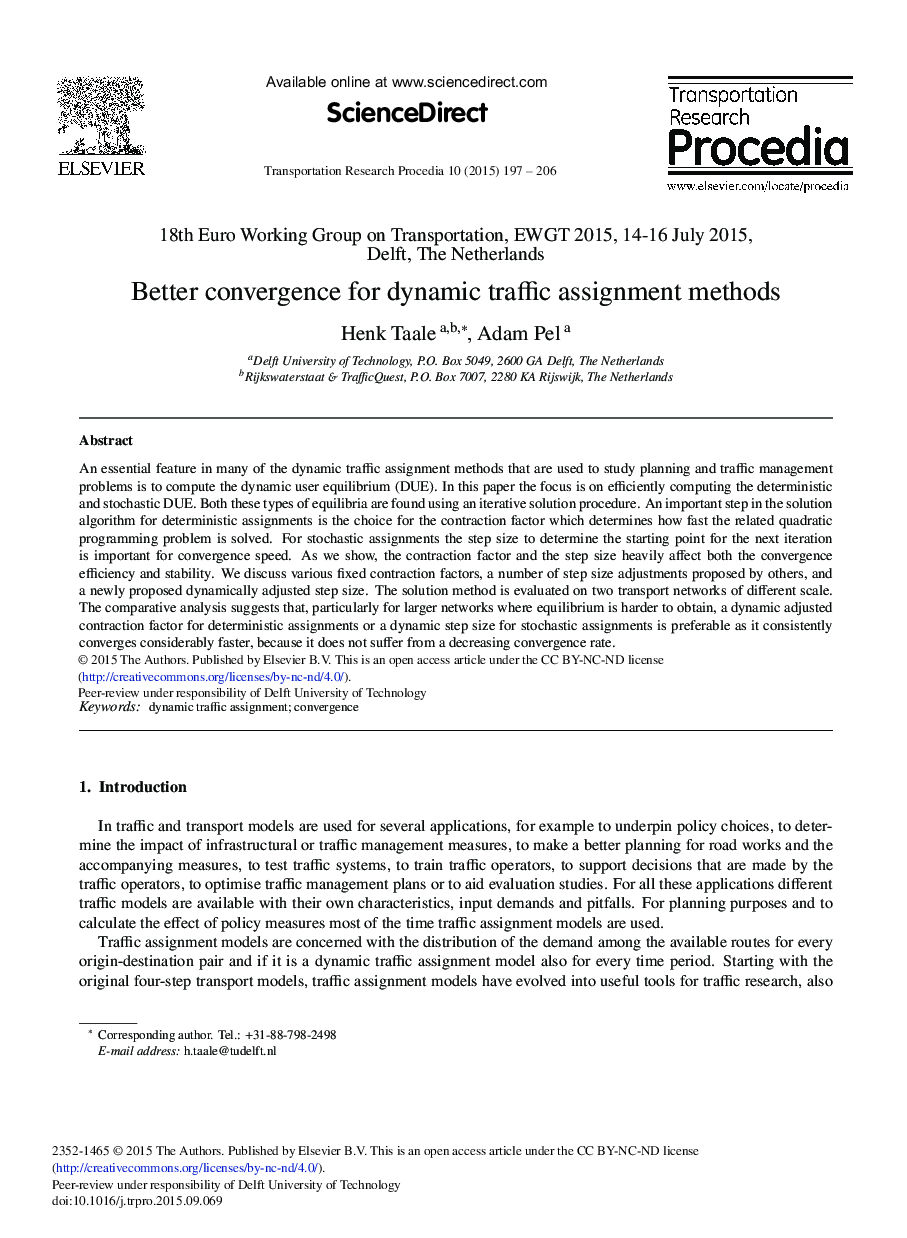| Article ID | Journal | Published Year | Pages | File Type |
|---|---|---|---|---|
| 1106829 | Transportation Research Procedia | 2015 | 10 Pages |
An essential feature in many of the dynamic traffic assignment methods that are used to study planning and traffic management problems is to compute the dynamic user equilibrium (DUE). In this paper the focus is on efficiently computing the deterministic and stochastic DUE. Both these types of equilibria are found using an iterative solution procedure. An important step in the solution algorithm for deterministic assignments is the choice for the contraction factor which determines how fast the related quadratic programming problem is solved. For stochastic assignments the step size to determine the starting point for the next iteration is important for convergence speed. As we show, the contraction factor and the step size heavily affect both the convergence efficiency and stability. We discuss various fixed contraction factors, a number of step size adjustments proposed by others, and a newly proposed dynamically adjusted step size. The solution method is evaluated on two transport networks of different scale. The comparative analysis suggests that, particularly for larger networks where equilibrium is harder to obtain, a dynamic adjusted contraction factor for deterministic assignments or a dynamic step size for stochastic assignments is preferable as it consistently converges considerably faster, because it does not suffer from a decreasing convergence rate.
